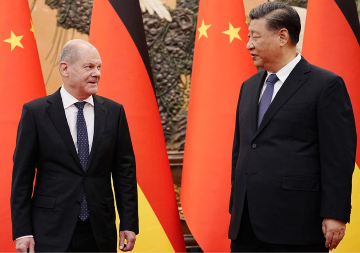
While many have pinned their hopes on technology to solve the looming challenges posed by climate change, it is clear that this alone may not be the silver bullet, and other processes will have to be invested into. For example, one of the most ambitious technological efforts to date is the Climeworks Orca plant that was launched in Iceland last month. The plant is illustrative of the inadequacy of the hunt for the technology elixir. The plant can remove 4,000 tons of CO2 a year, which is equivalent to the annual emission from just 800 cars. To scale this up and make it accessible to different geographies is the hurdle for such innovation. The timelines to do this are incompatible with the urgency of responding to global warming.
It is time to do what we have known needs to be done for decades—which is to reduce greenhouse gas emissions. These reductions are complicated by the fact that industrialisation is still underway in much of the world. Countries in the global South rightly seek space to grow. However, the template for that development—backed and funded by international financial institutions—is heavily reliant on high-emitting activities with only limited finance being deployed towards cleaner and greener options. At the same time, countries of the global North are dragging their feet and, in some cases, still peddling the idea that climate change can be responded to without dramatic changes in consumption patterns or significant financial reconfiguration. The “blah, blah, blah,” approach to climate change described by Greta Thunberg, is as she says, not working. Instead, countries around the world, especially high-income countries, must realise that they cannot negotiate or talk their way out of the climate mess created by them. Instead, it is time to get their political approach right and to deploy the largest quantum of financial resources ever mobilised to enable equitable green transitions. And there is another complication; this climate war chest will have to be invested into developing countries, which challenges the credit risks and cost of capital logic that have defined the post-War financial flows.
Countries of the global North are dragging their feet and, in some cases, still peddling the idea that climate change can be responded to without dramatic changes in consumption patterns or significant financial reconfiguration.
The COVID-19 pandemic has created renewed opportunities and invigorated the demand to make our cities healthier, make our social protection systems more robust, make our societies more equitable, and to respond to climate change meaningfully. More people now get what “systemic risk” means and the devastation caused by the pandemic should make governments more eager to address such risks.
The United Kingdom (UK) and India are well placed to respond to these new opportunities as partners and to craft a road map together for Glasgow and beyond. This is a partnership with much merit. The leadership for green transitions is coming from countries like India (the only G-20 country living up to its ‘2 degree’ commitments made at Paris) even as control over capital and technology resides in developed countries like the UK. Leveraging their specific roles and strengths, the UK and India can work together as partners in three areas in particular. These include human capital development, climate finance and funding of clean energy and infrastructure, and green and smart manufacturing.
Partnership in higher education
The UK is a global leader in education, knowledge, innovation, and research, while India is one of the largest consumers of higher education and is a market for research and innovation. Higher education enrollment, for example, has tripled over the last 20 years in India but remains at just 28 percent. The opportunity is defined by a simple fact—nearly half of India’s population is below the age of 25 and that demand for higher education is likely to increase. As a result, there is significant demand for UK education opportunities in India. In 2019, more than 37,500 Tier 4 student visas were given to Indian students studying in the UK. While this is a large number of students, in the larger context, it is insignificant and amounts to very little beyond building and nourishing an Oxbridge community in India.
Efforts under the new policy could create greater access to high-quality higher education in India, deepen UK–India academic and scientific collaborations, and create new research initiatives and more significant innovation.
India’s New Education Policy 2020 makes it easier and more attractive for foreign universities to establish branch campuses in India. Efforts under the new policy could create greater access to high-quality higher education in India, deepen UK–India academic and scientific collaborations, and create new research initiatives and more significant innovation. All of these can support broader efforts to foster human capital, skills, and knowledge in India, which are needed to transition towards a more sustainable, knowledge-based economy. UK institutions must re-calibrate their global role by investing in overseas markets and partnering to build the campuses of the future in the geographies that matter. Human capital and research efforts in India will enable innovation and work forces, which will be deployed at the frontlines of global climate and development efforts.
Partnership in finance
The second area of potential for the UK–India partnership is finance. Mitigating climate change will require enormous financial investments. This is much larger than the US $100 billion annual commitment made by the Annex II countries. For example, just for meeting its renewable energy targets by 2030, India will require around US $2.5 trillion dollars. The common but differentiated responsibility for financing green transitions posits that industrialised countries must contribute to (small amounts) and help catalyse large financial flows towards this ambition of New Delhi. However, many are falling behind even on their abysmally small commitments. Unless these trillions of dollars can flow to India and other developing countries, we will lose the climate battle and what unfolds will be unpredictable and consequential.
There are significant and unrealised opportunities for investment in ‘green transitions’ more broadly and at retail scale. Unfortunately, financial institutions are only modest actors in the green spaces in India. Transformative interventions at scale will require new thinking, innovative financial products and more favourable borrowing terms. It will be a crime against humanity if the country with the largest potential to curtail future emissions borrows money from the developed world at exorbitant rates. If Climate Risk is seen as a clear and present danger, cost of funding for climate mitigation projects must remain the same across continents.
Transformative interventions at scale will require new thinking, innovative financial products and more favourable borrowing terms.
The Indian Railway Finance Corporation (IRFC) issuance of climate bonds in 2017 is illustrative of the potential. The bond raised US $500 million from investors around the world. Municipal bodies in India, including the Indore Municipal Corporation (IMC), are also considering raising ‘green masala bonds’ to fund climate responsive projects. Green bonds offer an opportunity for countries like India to access new pools of international funding for green projects, for which there appears to be demand in the UK. In September, the UK issued its first sovereign green bond, raising 10 billion GBP, with demand of nearly 90 billion GBP, indicating the magnitude of appetite for such investments.
Additionally, regulations and perverse laws will have to make way and allow pension and insurance funds to invest into emerging economies that are the ground zero of the climate battle. These funds hold the largest global savings, mostly derived from fossil fuel age businesses and there is justice in their being the patient capital that is deployed in building clean and green infrastructure in emerging and developing economies. Retail finance needs innovation too. Buying a solar facility for rooftops in any market must be at a discount (financial costs) to the credit available for purchase of cars and air-conditioners. Bulk finance and retail finance have not yet signed the Paris Agreement; can London and New Delhi partner to change this?
Partnership in green manufacturing and value chains
The third opportunity is around supporting green and smart manufacturing and green value chains. Again, the pandemic has revealed the risks of over-dependence on any single country to supply critical goods. China, for example, owns the largest solar and wind manufacturing companies. India offers an alternative and an opportunity to diversify supply chains and make them more resilient. This is a chance to invest in and build up India’s smart and green manufacturing capabilities and create more robust supply chains for renewables and other green technologies. The R&D and innovation out of the UK has recently served only Beijing. It is time to rethink this monochromatic value chain. An India and UK innovation and smart manufacturing bridge is needed. The potential of such collaboration is illustrated by the AstraZeneca vaccine, for which R&D took place in the UK, with mass manufacturing in India at the Serum Institute of India – the world’s largest vaccine producer. India is also ramping up its green production and manufacturing capabilities in areas such as hydrogen production and the manufacturing of next generation battery technologies to support green transitions. Indian companies are scouting for partnerships; and it is time to put some political weight behind it. The Build Back Better World and the Quad and the EU and India partnership all support this.
India is also ramping up its green production and manufacturing capabilities in areas such as hydrogen production and the manufacturing of next generation battery technologies to support green transitions.
We must act to save lives, improve health, protect livelihoods, and safeguard resources for current and future generations. But the single most important motivation has to be the collective will to improve the lives of billions who have been excluded from the economic mainstream and, indeed, from any access to dignity and livelihoods. These constitute the largest cohort on the planet and their continued misery must not underwrite the green-tinted splurges of the rich world. The UK and India are in a position not just to act but to act as partners to change this.
The views expressed above belong to the author(s). ORF research and analyses now available on Telegram! Click here to access our curated content — blogs, longforms and interviews.




 PREV
PREV


